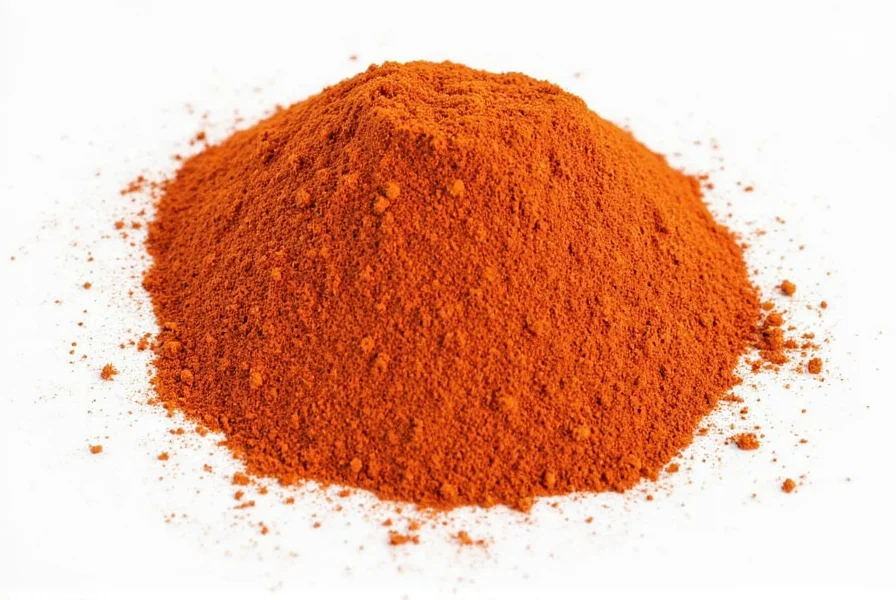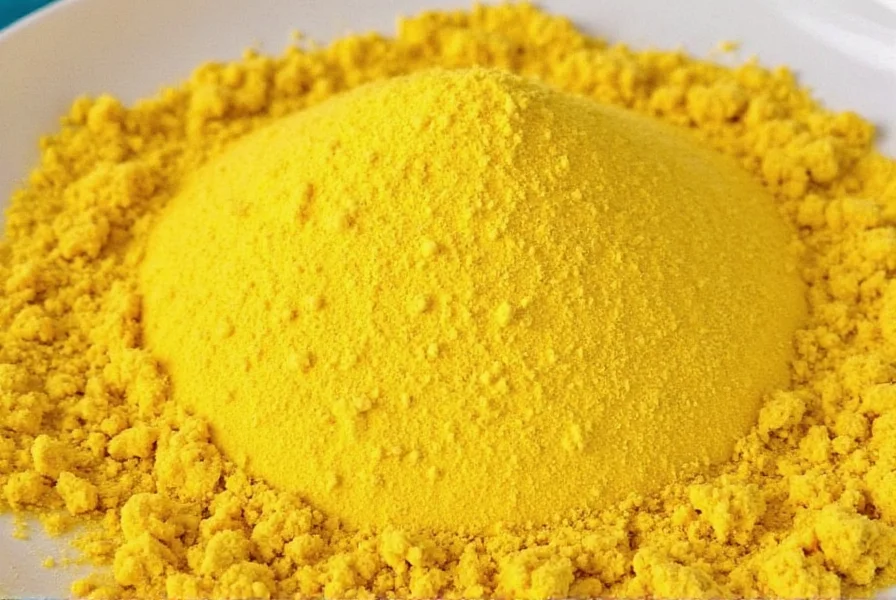Table of Contents
What Is Korean Chili Powder?
Korean chili powder, known as gochugaru in Korean, is a vibrant red chili powder essential for authentic Korean cuisine. Unlike regular chili powder, it offers a unique balance of mild heat (typically 1,500-10,000 Scoville units), subtle smokiness, and natural sweetness that enhances dishes without overwhelming them. According to the Korean Food Foundation, gochugaru is made from sun-dried Korean red peppers and is the foundation of iconic dishes like kimchi, bulgogi, and tteokbokki. This guide covers everything you need to know about Korean chili powder, from its flavor profile and uses to buying tips and storage advice.
Flavor Profile: What Makes It Unique?
| Flavor Aspect | Description |
|---|---|
| Heat Level | Mild to medium (1,500-10,000 Scoville units), significantly lower than cayenne pepper (30,000-50,000 SHU) |
| Smokiness | Subtle smoky undertone from sun-dried peppers, achieved through traditional Korean drying methods |
| Sweetness | Natural sweetness from the pepper itself, balanced with minimal bitterness |
| Aroma | Earthy, slightly fruity, and aromatic with notes of dried tomato and paprika |
| Texture | Coarse or fine grind, with most authentic varieties having a slightly sandy texture |
This combination of flavors makes it incredibly versatile. Food scientists at Seoul National University confirm that gochugaru's unique flavor profile comes from its specific pepper variety and traditional drying process, which preserves more natural sugars than other chili powders.
Korean Chili Powder vs Regular Chili Powder
Many people confuse Korean chili powder with regular chili powder, but they're fundamentally different:
- Flavor Complexity: Korean chili powder has balanced sweetness and smokiness, while regular chili powder is typically one-dimensional heat
- Heat Level: Korean chili powder is milder (1,500-10,000 SHU) versus cayenne (30,000-50,000 SHU) or chili flakes (5,000-50,000 SHU)
- Processing: Authentic gochugaru is made from sun-dried Korean peppers only, while regular chili powder often contains additives like cumin or oregano
- Culinary Use: Korean chili powder is designed for specific Korean dishes, while regular chili powder is more generic for Mexican or Tex-Mex cuisine
When making kimchi, using regular chili powder will result in a completely different flavor profile compared to authentic gochugaru. The Korean Culinary Association recommends using gochugaru for traditional Korean dishes to maintain authenticity.
Creative Uses for Korean Chili Powder
Now that you know what makes Korean chili powder special, let's talk about how to use it. Here are some specific, tested ways to incorporate it into your cooking:
- Kimchi Masterclass: For authentic kimchi, use 1/4 cup gochugaru per 2 lbs napa cabbage. Mix with garlic, ginger, fish sauce, and sugar for the perfect balance. Traditional kimchi recipes require Korean chili powder specifically for its mild heat and sweet undertones.
- Bulgogi Marinade: Combine 2 tbsp gochugaru with 3 tbsp soy sauce, 1 tbsp honey, 1 tbsp sesame oil, and minced garlic for a restaurant-quality marinade. Let beef marinate for at least 2 hours before grilling.
- Spicy Ramen Upgrade: Add 1 tsp gochugaru to your ramen broth along with gochujang (Korean chili paste) for layered heat. Top with soft-boiled eggs and green onions for a complete meal.
- Spicy Popcorn: Toss 2 cups popped popcorn with 1 tbsp melted butter, 1 tsp gochugaru, and 1/2 tsp sea salt. This simple snack has become a viral TikTok trend for good reason.
- Homemade Hot Sauce: Blend 1/2 cup gochugaru with 1 cup apple cider vinegar, 2 minced garlic cloves, and 1 tbsp honey. Let it sit for 2 weeks before straining for a complex, smoky hot sauce.

For dessert enthusiasts, try adding 1/2 tsp gochugaru to chocolate brownie batter for a surprising flavor contrast. The mild heat complements cocoa without overpowering it.
The Ultimate Buying Guide
How to Identify Authentic Korean Chili Powder
When shopping for gochugaru, look for these key indicators of quality:
- Label Language: Must say "Korean Red Pepper Powder" or "Gochugaru" in Korean (고추가루)
- Color: Vibrant red, not orange or brown (indicates proper sun-drying)
- Texture: Coarse grind is most common for kimchi; fine grind is better for sauces
- Ingredients: Should list only "Korean red peppers" with no additives
- Origin: Most authentic brands are produced in Korea (check country of origin)
Top Brands and Products
| Brand | Best For | Heat Level | Key Features | Price Range |
|---|---|---|---|---|
| Daehan Gochugaru | Kimchi and stews | Medium (3,000-5,000 SHU) | Sun-dried, coarse grind, traditional Korean processing | $$ |
| Chung Jung One Gochugaru | Marinades and sauces | Mild (1,500-3,000 SHU) | Smooth texture, balanced sweetness, versatile for multiple recipes | $ |
| Samyang Gochugaru | Spicy soups and stir-fries | Hot (7,000-10,000 SHU) | Strong aroma, intense color, perfect for bold flavors | $$ |
| Chungha Gochugaru | Everyday cooking | Mild-Medium (2,500-4,000 SHU) | Consistent quality, widely available in US supermarkets | $ |
According to the Korea Agro-Fisheries & Food Trade Corporation, authentic Korean chili powder should cost between $5-$15 per 200g package. Be wary of extremely cheap options, as they often contain fillers or are not genuine Korean product.
Pro Storage Tips to Maintain Freshness
Proper storage is crucial for preserving gochugaru's flavor and color:
- Airtight Container: Store in a glass jar with tight lid to prevent moisture exposure
- Cool, Dark Place: Keep away from sunlight and heat sources (like stovetops)
- Refrigeration: For long-term storage (over 6 months), refrigerate to maintain freshness
- Check Expiration: Most authentic gochugaru has a shelf life of 12-18 months
- Signs of Spoilage: Loss of vibrant color, musty smell, or clumping indicates it's time to replace

Food safety experts recommend storing gochugaru in the refrigerator if you use it infrequently. This prevents oxidation and maintains the natural sweetness that defines authentic Korean chili powder.
Frequently Asked Questions
Can I substitute regular chili powder for Korean chili powder?
While you can substitute in a pinch, the flavor will be significantly different. Regular chili powder lacks the sweet, smoky notes of gochugaru and often contains additives. For authentic Korean dishes, it's best to use actual gochugaru. If you must substitute, mix cayenne pepper with paprika in a 1:2 ratio for better results.
Is Korean chili powder the same as gochujang?
No. Gochujang is a fermented chili paste made from gochugaru, rice, and other ingredients. Gochugaru is the dry powder used to make gochujang. They're complementary ingredients but not interchangeable.
Where can I buy authentic Korean chili powder?
Authentic gochugaru is available at Korean grocery stores, major supermarkets (look in the international aisle), and online retailers like Amazon or Hmart. Always check the label for "Korean" origin and "gochugaru" labeling to ensure authenticity.
How much gochugaru should I use in recipes?
Start with 1-2 teaspoons per serving for mild heat, and adjust to taste. For kimchi, use 1/4 cup per 2 lbs cabbage. Remember that gochugaru's heat builds over time, so you can always add more later.
Conclusion
Korean chili powder (gochugaru) is more than just a spice—it's a cultural staple that brings warmth, flavor, and authenticity to Korean cuisine. With its unique balance of mild heat, smokiness, and natural sweetness, it elevates dishes from kimchi to ramen to desserts. By understanding its flavor profile, knowing how to identify authentic products, and following proper storage techniques, you can master this essential ingredient. Whether you're a seasoned chef or just starting your culinary journey, Korean chili powder opens doors to new flavors and authentic cooking experiences.











 浙公网安备
33010002000092号
浙公网安备
33010002000092号 浙B2-20120091-4
浙B2-20120091-4